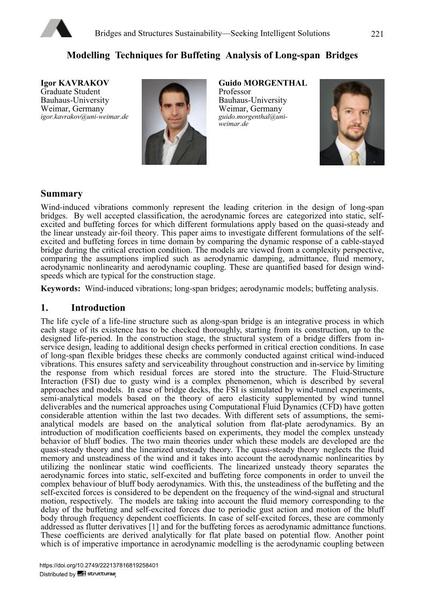Modelling Techniques for Buffeting Analysis of Long-span Bridges

|
|
|||||||||||
Détails bibliographiques
| Auteur(s): |
Igor Kavrakov
Guido Morgenthal |
||||
|---|---|---|---|---|---|
| Médium: | papier de conférence | ||||
| Langue(s): | anglais | ||||
| Conférence: | IABSE Conference: Bridges and Structures Sustainability - Seeking Intelligent Solutions, Guangzhou, China, 8-11 May 2016 | ||||
| Publié dans: | IABSE Conference, Guangzhou, China, 8 – 11 May 2016 | ||||
|
|||||
| Page(s): | 221-228 | ||||
| Nombre total de pages (du PDF): | 8 | ||||
| Année: | 2016 | ||||
| DOI: | 10.2749/222137816819258401 | ||||
| Abstrait: |
Wind-induced vibrations commonly represent the leading criterion in the design of long-span bridges. By well accepted classification, the aerodynamic forces are categorized into static, self-excited and buffeting forces for which different formulations apply based on the quasi-steady and the linear unsteady air-foil theory. This paper aims to investigate different formulations of the self-excited and buffeting forces in time domain by comparing the dynamic response of a cable-stayed bridge during the critical erection condition. The models are viewed from a complexity perspective, comparing the assumptions implied such as aerodynamic damping, admittance, fluid memory, aerodynamic nonlinearity and aerodynamic coupling. These are quantified based for design wind speeds which are typical for the construction stage. |
||||
